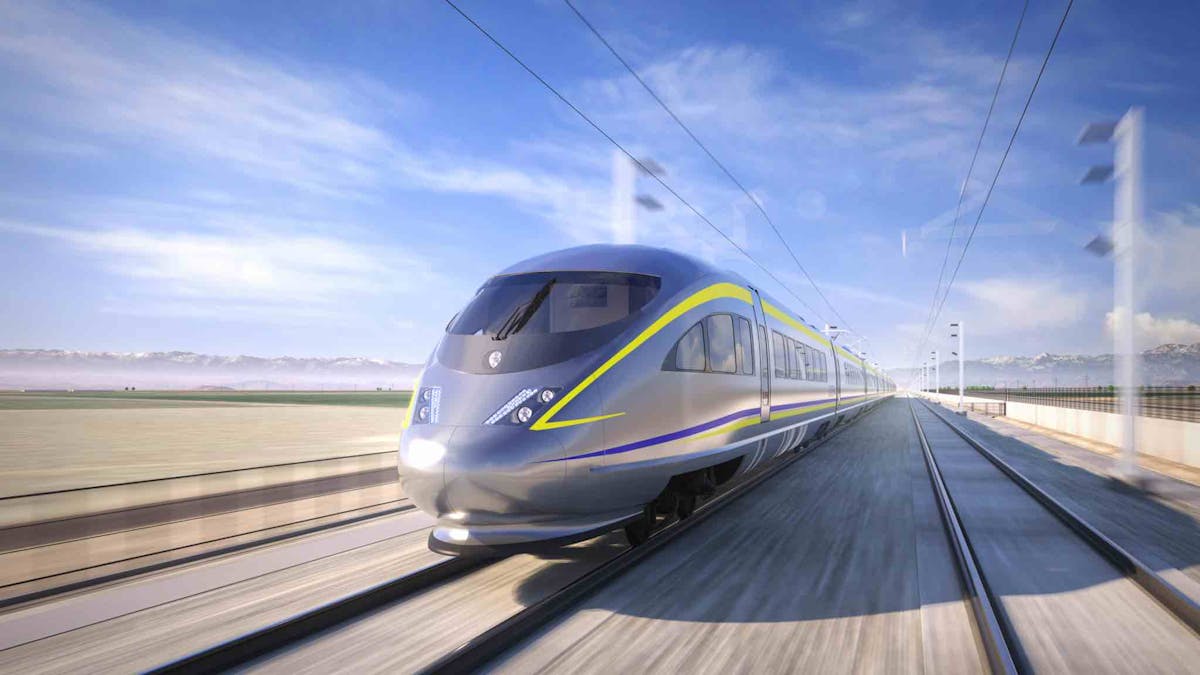California Bullet Train Bogged Down in Delays, Cost Overruns
California voters who approved the project in 2008 were told at the time it would cost roughly $33 billion. Now, the estimate is as much as $128 billion.

A high-speed rail project launched in California during the Clinton administration and initially scheduled to be operational by 2020 is still as much as a decade away from completion and has already cost at least three times as much as initially envisioned.
An annual report from the California High Speed Rail Authority released last week estimated that the price tag for the 500-mile link between Los Angeles and San Francisco will now be between $88 billion and $128 billion, a 13 percent increase over the projections made by the company only a year ago. California voters who approved the project in 2008 were told at the time it would cost roughly $33 billion.
In a note attached to the report, the CEO of the rail authority, Brian Kelly, said the current times are tough for megaprojects like his and public transit in general.
“The impacts of the Covid-19 pandemic on global supply chains and the resulting market instability and inflation have impacted prices for construction commodities like concrete and steel as well as labor,” Mr. Kelly said. “Large infrastructure projects all over the world have felt the impact of this market instability. We are not immune.”
Additionally, new forecasts on ridership for the line by the authority are projecting 25 percent fewer passengers than earlier forecasts for the all-electric, 200-mph trains, largely because population and employment growth estimates for the state overall have declined in recent years.
On the bright side, Mr. Kelly said, the authority has created 10,000 construction jobs in California’s Central Valley, the company has environmentally cleared 422 of the 500 miles on the line, as well secured the right-of-way for 96 percent of the 119 miles now under construction between Bakersfield and Merced. The latest estimates are that portions of the line should be open to passengers between 2030 and 2033, but there is no firm timetable for the entirety of the connection between San Francisco and Los Angeles.
Republicans in the California state legislature are said to be seething about the project’s cost overruns — all-told the line is now expected to cost $206 million per mile — and delays, especially in light of the $22 billion budget shortfall expected this year. One, Senate Minority Leader Brian Jones, has taken to calling it the “hot mess express.”
“Californians have lost faith in this project, and the legislature has lost faith as well; it’s very frustrating,” said GOP Assemblyman Vince Fong, who represents parts of the Central Valley. “We need to end this project, take the resources and invest it in better things.”
Similar projects in Europe and Asia cost around $10 million per mile to build by some estimates. Early in the California project, the French national rail company, SNCF, was among several foreign companies that offered to help manage the project. The company’s recommendations were reportedly rejected — largely for political reasons — and the company pulled out in 2011.
“There were so many things that went wrong,” a project manager for SNCF, Dan McNamara, told the New York Times. “SNCF was very angry. They told the state they were leaving for North Africa, which was less politically dysfunctional. They went to Morocco and helped them build a rail system.”
Morocco’s bullet train started service in 2018.

